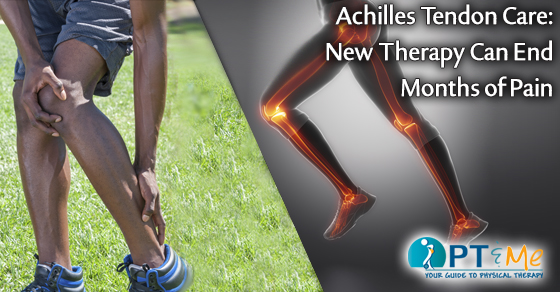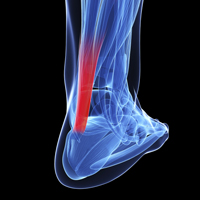The Achilles tendon is the large cord-like structure at the back of the ankle. It is responsible for transferring the muscle forces generated by the calf, which in turn allows you to roll onto the ball of your foot during walking and running.
We don’t realize it, but this tendon can withstand tremendous stress. It can tolerate forces of greater than 1000 pounds. However, it is also a tendon that can become inflamed and injured. Symptoms include pain (in the tendon or where it attaches to the heel bone), swelling, weakness in the leg and morning stiffness. The discomfort that resolves as the day progresses is common.
Often, physical therapists see clients that experience chronic Achilles pain. New research concludes that there is hope for these patients. Recent studies have shown that a certain Achilles condition called tendinosis, responds very well to a specific program of, what we call, eccentric loading. Given enough time and proper technique, physical therapists can help these patients recover from a problem that may have been bothersome for several months.
Who do you know that is experiencing Achilles or some other type of foot pain? There is a good chance that physical therapy can help, and make dramatic changes in someone’s condition. Please, don’t hesitate to call your physical therapist.
PUT ICE ON A NEW INJURY
What should I put on a strained muscle or joint? This is a popular question. The answer is a simple acronym:
• R est
• I ce
• C ompression
• E levation
You need to rest an injured joint, muscle or ligament. Ice helps with pain relief and to some degree, decreases swelling. Compression and elevation help decrease the swelling that results from a soft tissue injury. Excessive swelling can cause additional cell/tissue damage.
VIEW A RICE PICTURE
Picture of a proper RICE technique on the knee:
http://www.ptclinic.com/downloads/1-1.pdf



